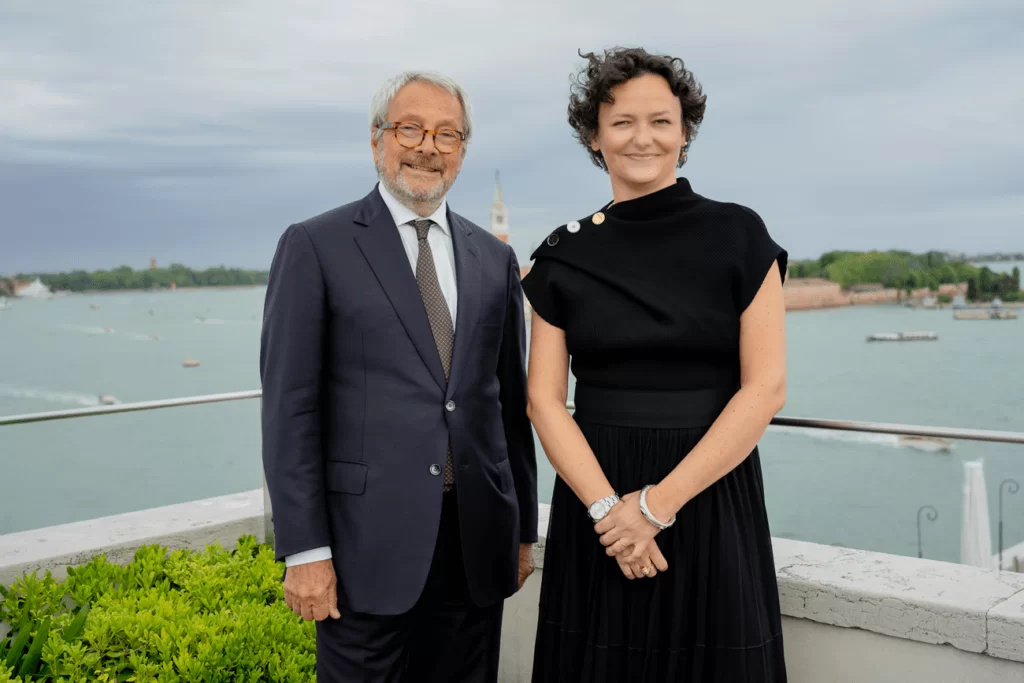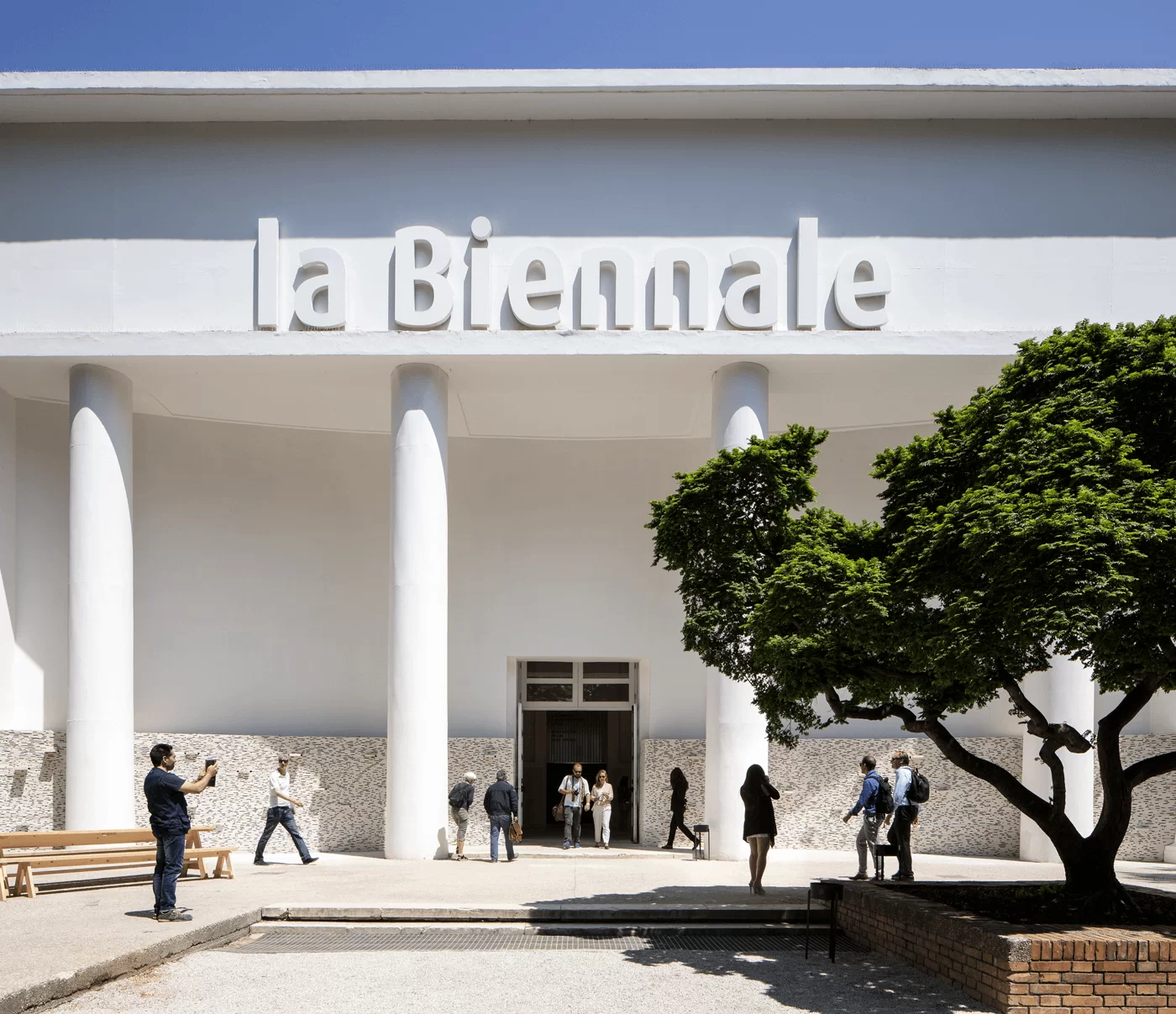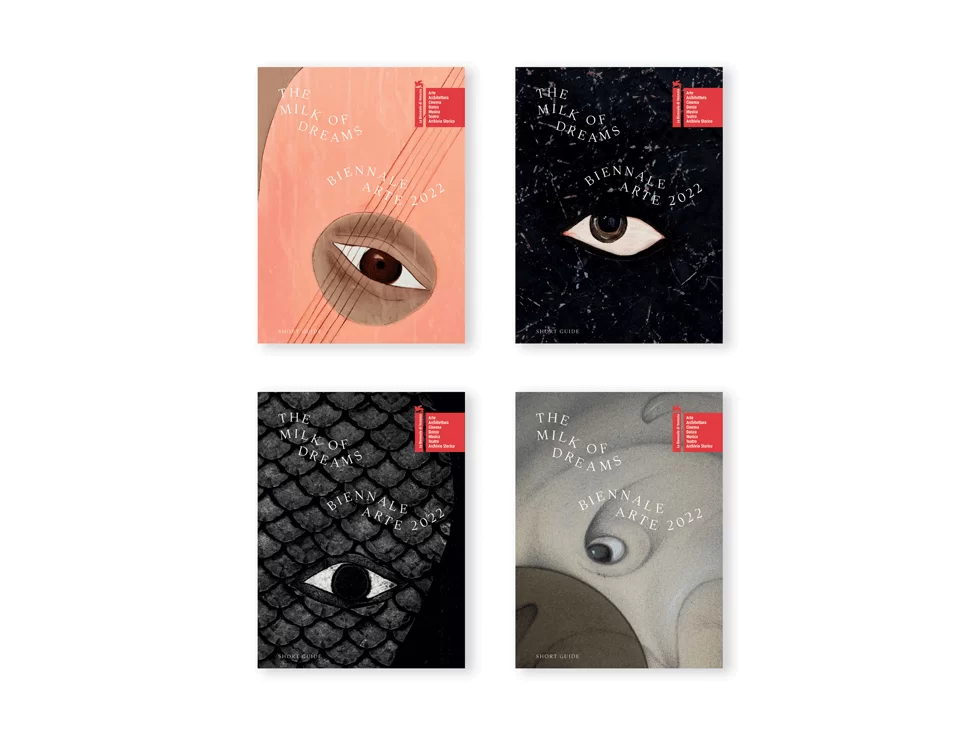La Biennale di Venezia
59th International Art Exhibition
The Milk of Dreams
Venice (Giardini and Arsenale), 23 April – 27 November 2022
Pre-opening: April 20, 21 and 22
The 59th International Art Exhibition of La Biennale di Venezia, titled The Milk of Dreams, will open to the public from Saturday April 23 to Sunday November 27, 2022, at the Giardini and the Arsenale; it will be curated by Cecilia Alemani and organised by La Biennale di Venezia chaired by Roberto Cicutto. The pre-opening will take place on April 20, 21 and 22; the awards ceremony and inauguration will be held on 23 April 2022.

Photo Andrea Avezzu Courtesy of La Biennale di Venezia
In 2021, La Biennale di Venezia launched a plan to reconsider all of its activities in light of recognized and consolidated principles of environmental sustainability. For the year 2022, the goal is to extend the achievement of “carbon neutrality” certification, which was obtained in 2021 for the 78th Venice International Film Festival, to all of La Biennale’s scheduled activities, which include the 59th International Art Exhibition, the Theatre, Music and Dance Festivals and the 79th Venice International Film Festival.

THE INTERNATIONAL EXHIBITION
The Exhibition will take place in the Central Pavilion (Giardini) and in the Arsenale, including 213 artists from 58 countries; 180 of these are participating for the first time in the International Exhibition. 1,433 the works and objects on display, 80 new projects are conceived specifically for the Biennale Arte.
“The Milk of Dreams takes its title from a book by Leonora Carrington (1917–2011) – Cecilia Alemani stated – in which the Surrealist artist describes a magical world where life is constantly re-envisioned through the prism of the imagination. It is a world where everyone can change, be transformed, become something or someone else. The exhibition The Milk of Dreams takes Leonora Carrington’s otherworldly creatures, along with other figures of transformation, as companions on an imaginary journey through the metamorphoses of bodies and definitions of the human.
This exhibition is grounded in many conversations with artists held in the last few years. The questions that kept emerging from these dialogues seem to capture this moment in history when the very survival of the species is threatened, but also to sum up many other inquiries that pervade the sciences, arts, and myths of our time. How is the definition of the human changing? What constitutes life, and what differentiates plant and animal, human and non-human? What are our responsibilities towards the planet, other people, and other life forms? And what would life
look like without us?
These are some of the guiding questions for this edition of the Biennale Arte, which focuses on three thematic areas in particular: the representation of bodies and their metamorphoses; the relationship between individuals and technologies; the connection between bodies and the Earth.”

“As visitors move through the exhibition in the Central Pavilion and the Corderie, they encounter five smaller, historical sections: miniature constellations of artworks, found objects, and documents, clustered together to explore certain key themes. Conceived like time capsules, these shows within the show provide additional tools of investigation and introspection, weaving a web of references and echoes that link artworks of the past – including major museum loans and unconventional selections – to the pieces by contemporary artists in the surrounding space.
This wide-ranging, transhistorical approach traces kinships and affinities between artistic methods and practices, even across generations, to create new layers of meaning and bridge present and past. What emerges is a historical narrative that is not built around systems of direct inheritance or conflict, but around forms of symbiosis, solidarity, and sisterhood.”
“The Milk of Dreams was conceived and organised in a period of enormous instability and uncertainty, since its development coincided with the outbreak and spread of the Covid-19 pandemic. La Biennale di Venezia was forced to postpone this edition by one year, an event that had only occurred during the two World Wars since 1895. So the very fact that this exhibition can open is somewhat extraordinary: its inauguration is not exactly the symbol of a return to normal life, but rather the outcome of a collective effort that seems almost miraculous.
During these endless months in front of the screen, I have pondered the question of what role the International Art Exhibition should play at this historical juncture, and the simplest, most sincere answer I could find is that the Biennale sums up all the things we have so sorely missed in the last two years: the freedom to meet people from all over the world, the possibility of travel, the joy of spending time together, the practice of difference, translation, incomprehension, and communion.
The Milk of Dreams is not an exhibition about the pandemic, but it inevitably registers the upheavals of our era. In times like this, as the history of La Biennale di Venezia clearly shows, art and artists can help us imagine new modes of coexistence and infinite new possibilities of transformation.”
NATIONAL PARTICIPATIONS
The Exhibition will also include 80 National Participations in the historic Pavilions at the Giardini, at the Arsenale and in the city centre of Venice. 5 countries will be participating for the first time at the Biennale Arte: Republic of Camerun, Namibia, Nepal, Sultanate of Oman, and Uganda.
Republic of Kazakhstan, Republic of Kirghizistan and Republic of Uzbekistan participate for the first time with their own pavilion. The Italian Pavilion at the Tese delle Vergini in the Arsenale, sponsored and promoted by the Ministero della Cultura, Direzione Generale Arte e Architettura Contemporanee e Periferie Urbane, is curated by Eugenio Viola.
COLLATERAL EVENTS
The Collateral Events, which are admitted by the Curator and promoted by non–profit national and international bodies and institutions, will take place in several locations around the city of Venice. They offer a wide range of contributions and participations that enrich the diversity of voices that characterizes the Exhibition.
SPECIAL PROJECTS realised by La Biennale di Venezia
- Forte Marghera Special Project, Mestre
Elisa Giardina Papa, one of the artists taking part in the International Exhibition (in
competition), has been invited by Cecilia Alemani to make a special work in Forte
Marghera, in the building called Polveriera austriaca. - Applied Arts Pavilion Special Project, Arsenale, Sale d’Armi
Artist Sophia Al-Maria has been selected to present a work in the Applied Arts Pavilion at
the Sale d’Armi, Arsenale. This is the sixth edition of the collaboration between La Biennale
di Venezia and the Victoria and Albert Museum (V&A) in London.
BIENNALE COLLEGE ARTE
The selected projects for the 1st edition of Biennale College Arte 2021/22 are by Simnikiwe Buhlungu, Ambra Castagnetti, Andro Eradze and Kudzanai-Violet Hwami. The 4 artists will receive a grant of 25,000 euros for the realization of the final work. The artworks will be presented, out of competition, as part of the 59th International Art Exhibition, The Milk of Dreams. Over 250 young emerging artists under 30 from 58 countries around the world have joined the call for participation. More than half are women.
BIENNALE SESSIONS, the project for Universities
For the eleventh consecutive year, La Biennale dedicates the Biennale Sessions project to institutions that develop research and training programmes in architecture, the arts and related fields, and to Universities and Fine Arts Academies. The aim is to facilitate self-organised three day visits for groups of at least 50 students and teachers, with the possibility of holding seminars in the exhibition venues offered free of charge and assistance in coordinating travel and accommodation.
EDUCATIONAL
For the past decade, La Biennale di Venezia has been devoting increased attention to learning activities and has developed a growing commitment to educational initiatives addressed to the audience of its Exhibitions, to universities, young people, and children, from schools at all levels.
In the past two years, the Art and Architecture Exhibitions had 82,819 participants in Educational activities in total, amongst whom 48,006 were youngsters. A broad Educational programme has been scheduled for 2022 as well, addressed to individuals and groups of students, children, adults, families, professionals, companies, and universities. All the initiatives aim at actively involving the participants, and are led by professional operators, carefully trained by La Biennale di Venezia. They are divided into two categories: Guided Tours and Workshop Activities.
CATALOGUE AND GRAPHIC IDENTITY
The official catalogue, titled “The Milk of Dreams”, consists of two volumes.
Volume I of the catalogue is dedicated to the International Exhibition, curated by Cecilia Alemani. This volume includes the Curator’s original contribution as well as a wide range of illustrations and critical essays by some of today’s most cutting-edge thinkers and writers.
Volume II is focused on the National Participations and the Collateral Events. The Exhibition Guide is conceived to accompany the visitor through the Exhibition.
The graphic identity of Biennale Arte 2022 and the publication’s design are by A Practice for Everyday Life, London.
The graphic identity explores ideas of fluidity, identity, the human and the non-human, re-enchantment, and fragmentation. The graphic identity positions artists’ works at its forefront, featuring details from artworks by Belkis Ayón, Felipe Baeza, Tatsuo Ikeda, and Cecilia Vicuña. These disparate artworks are united in their representation of eyes, which are symbolic of important ideas running through the exhibition: dreams, identity, the body, and reflection.
#BiennaleArte2022 #IlLatteDeiSogni #TheMilkOfDreams
©2022 La Biennale di Venezia









